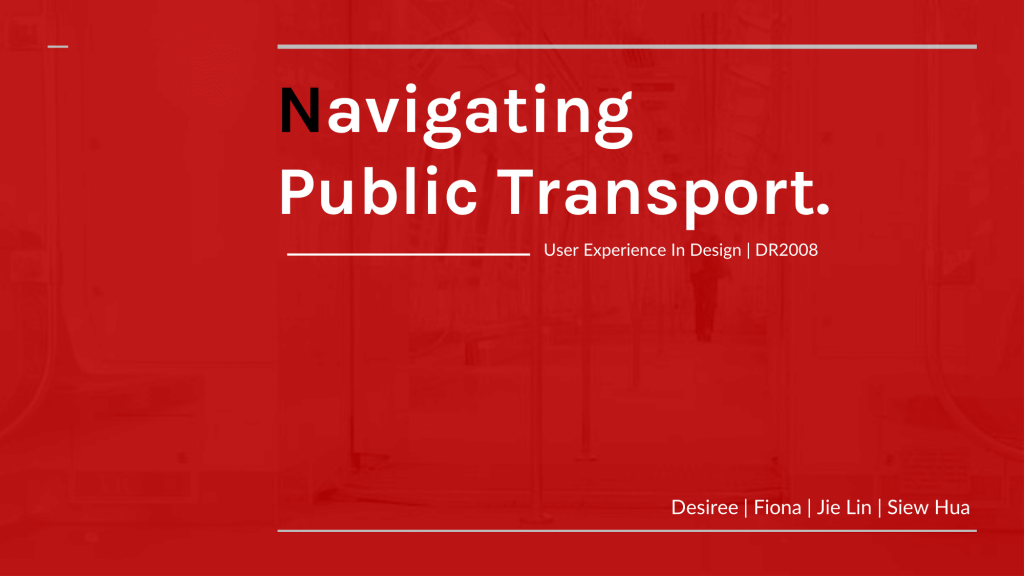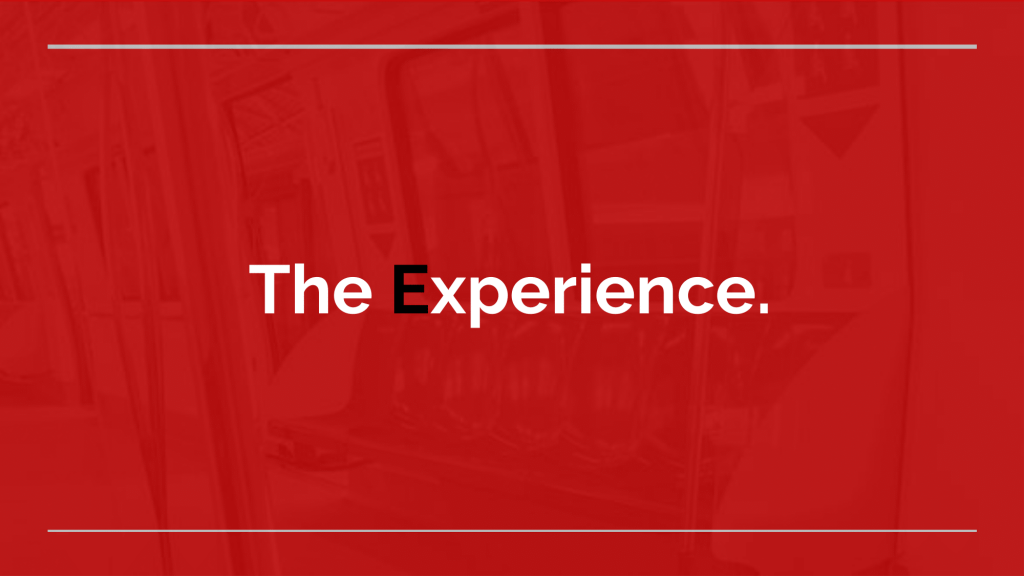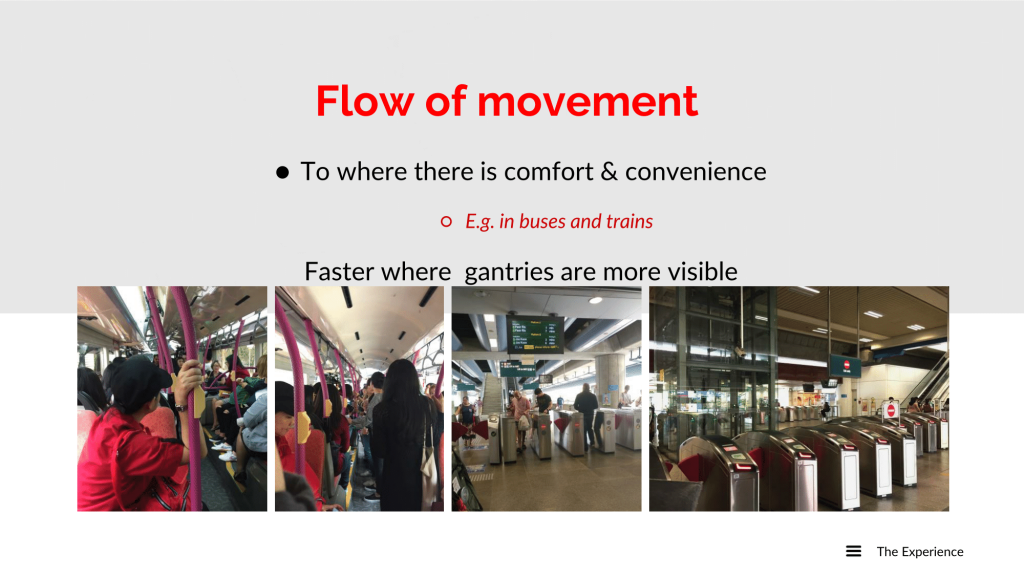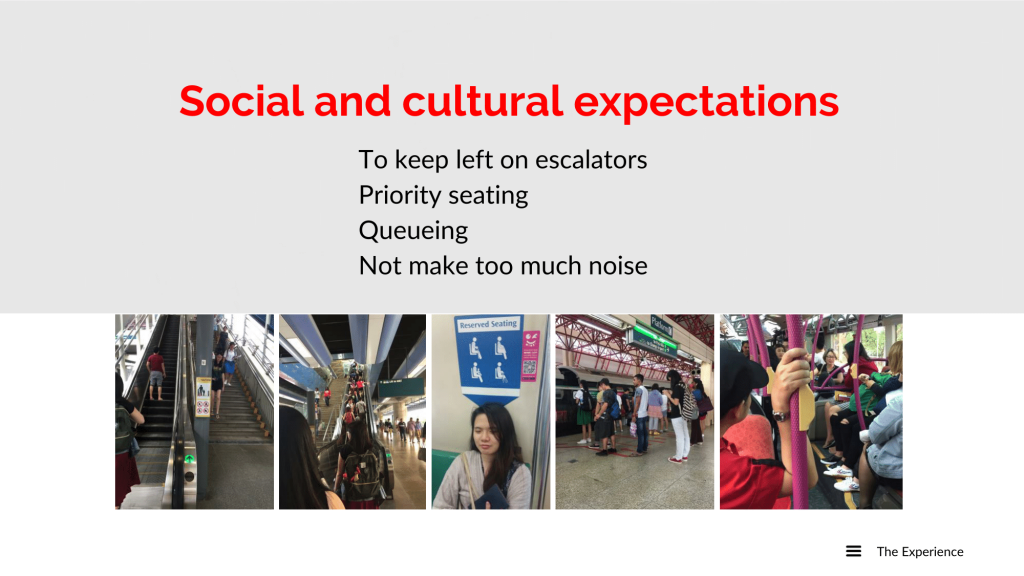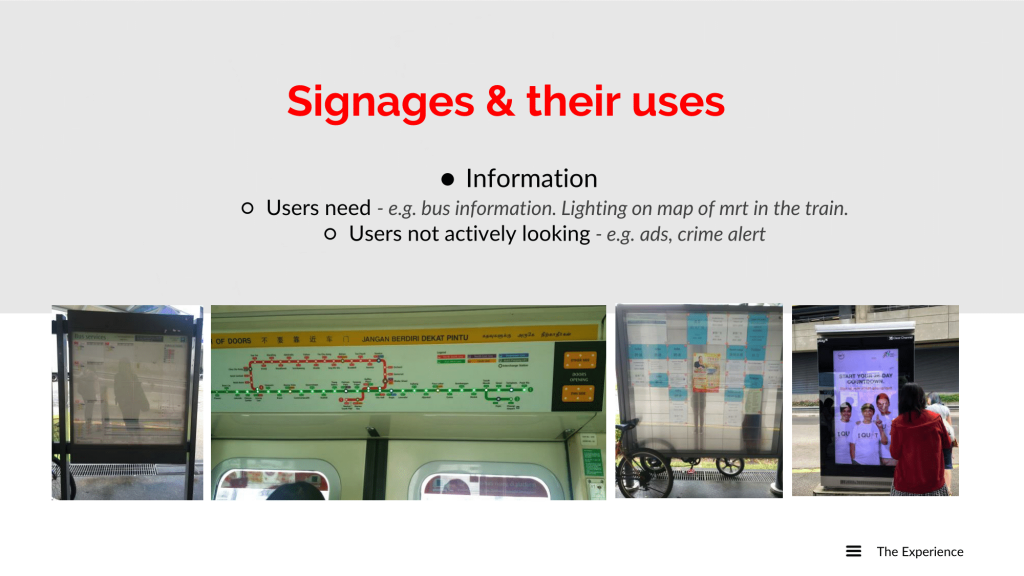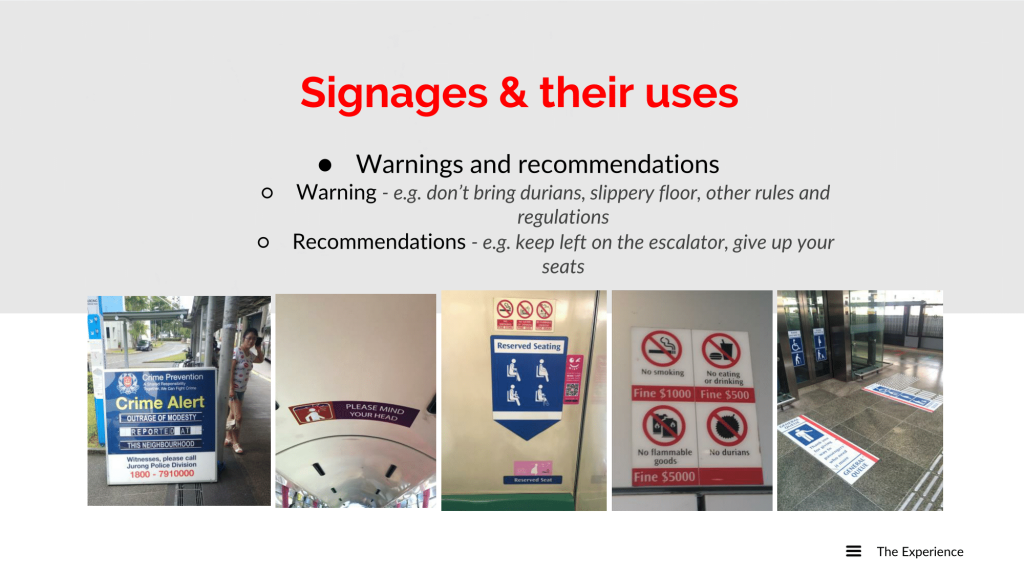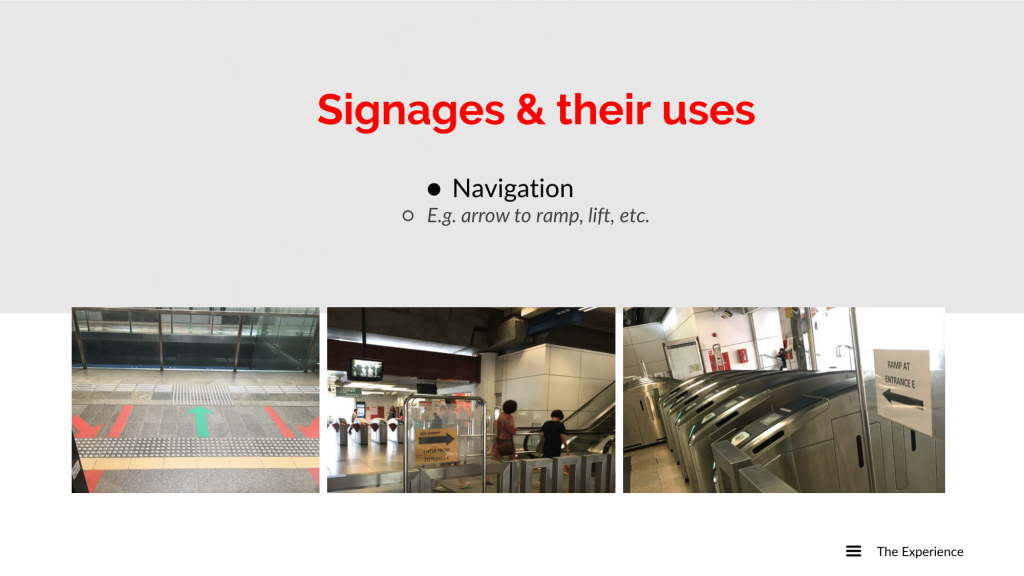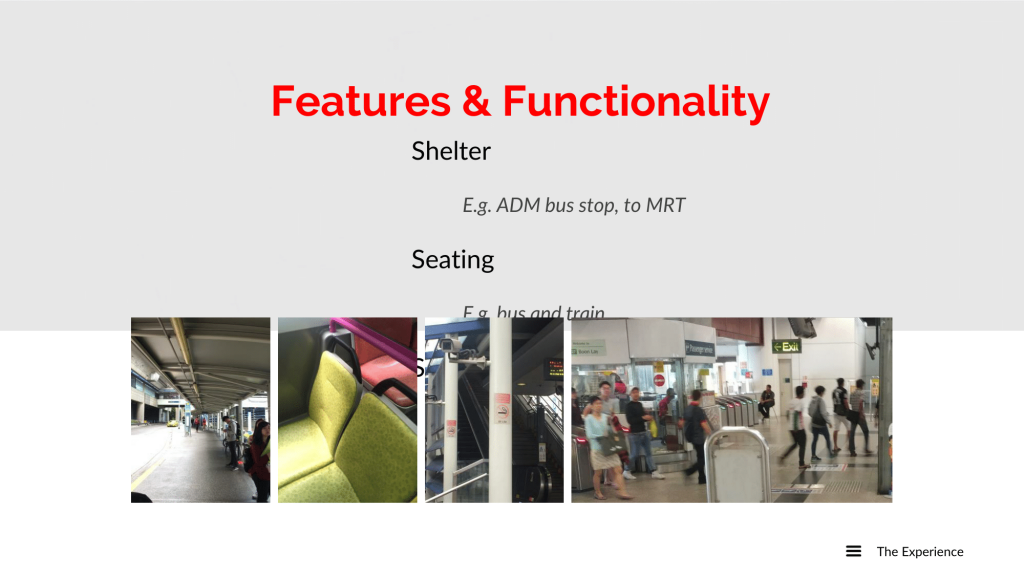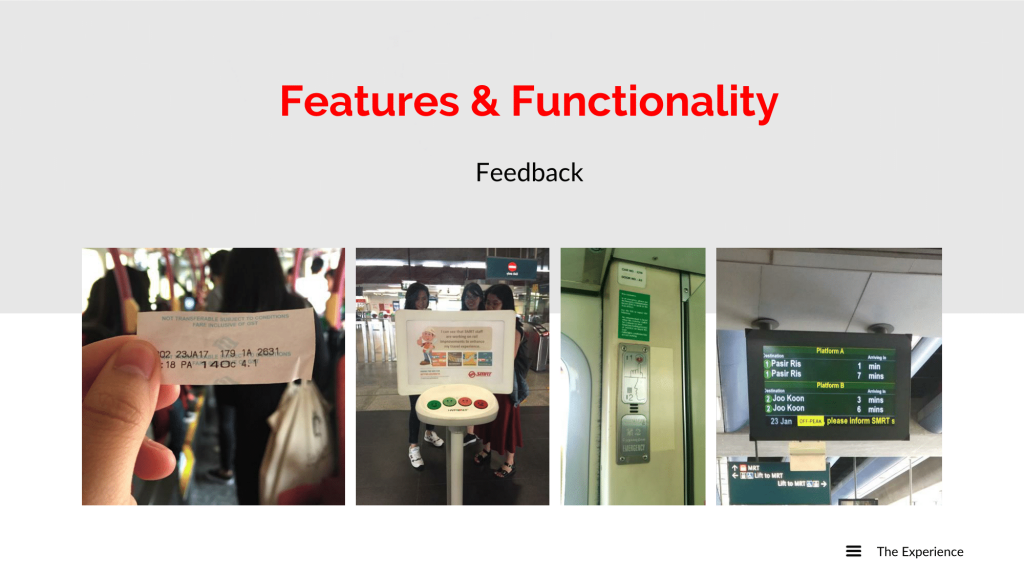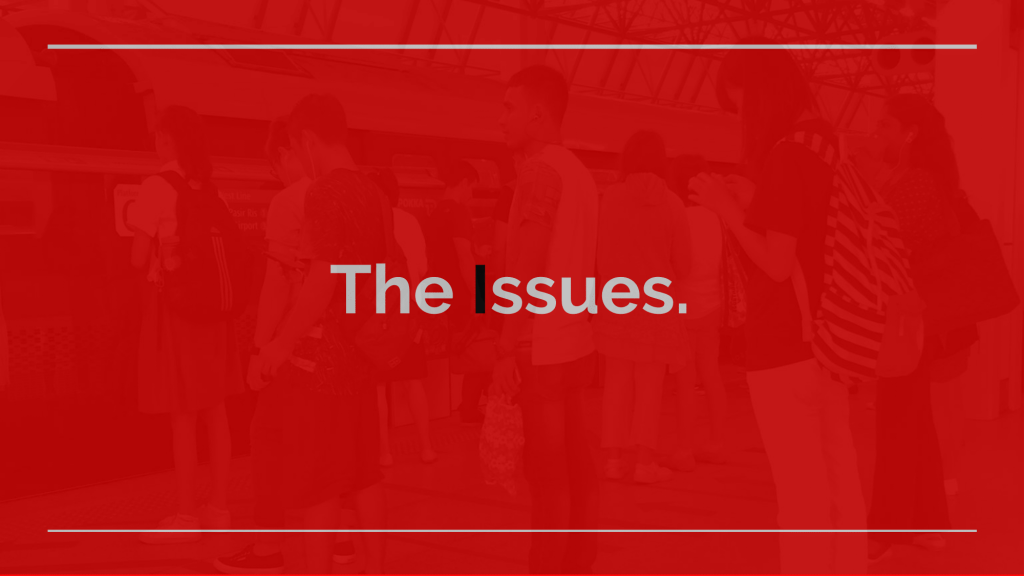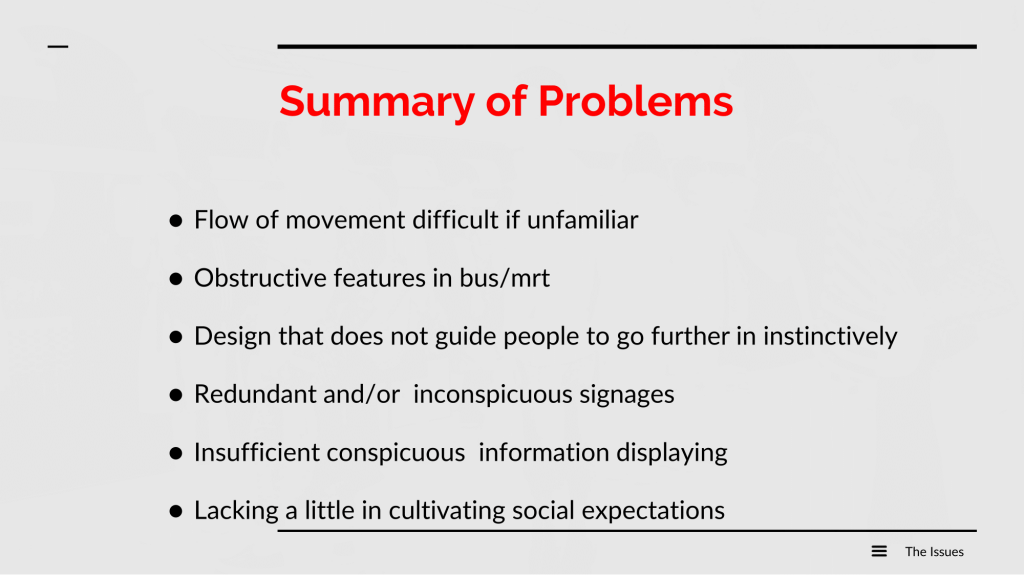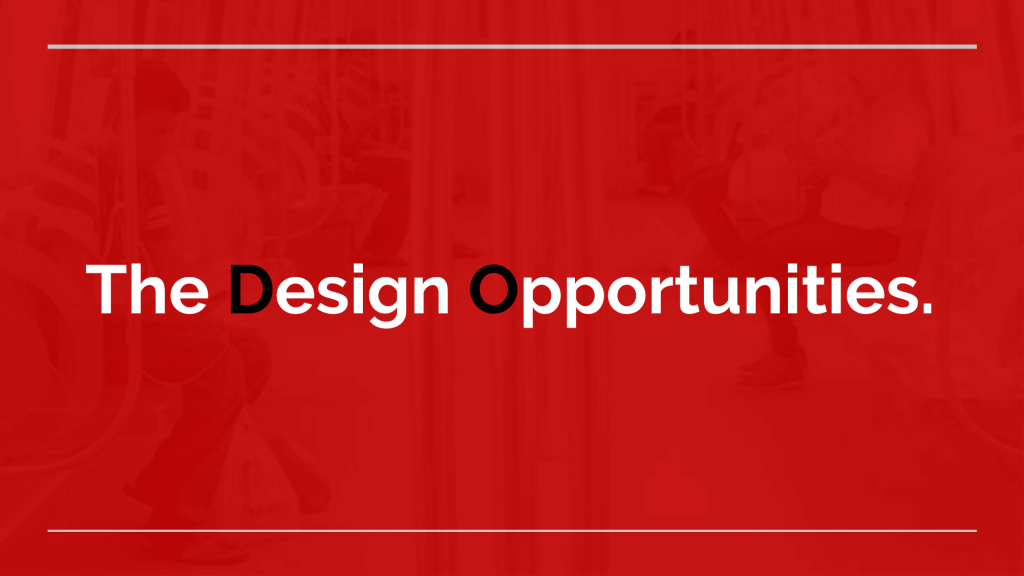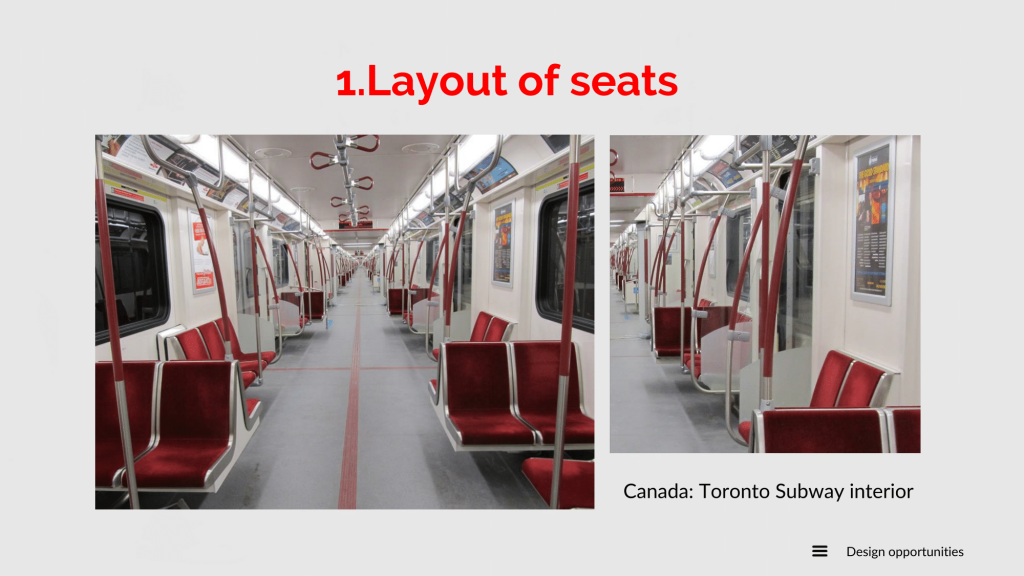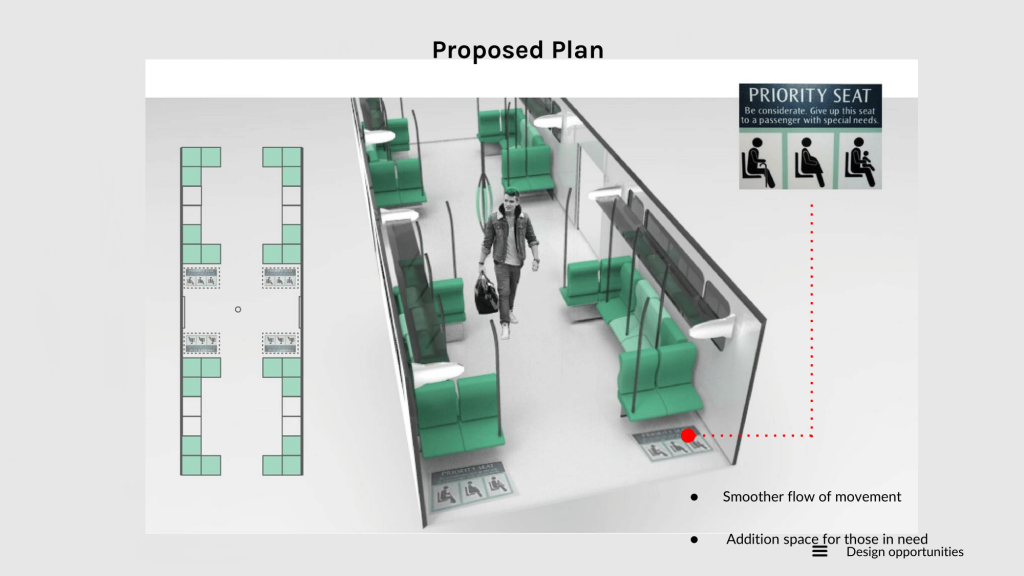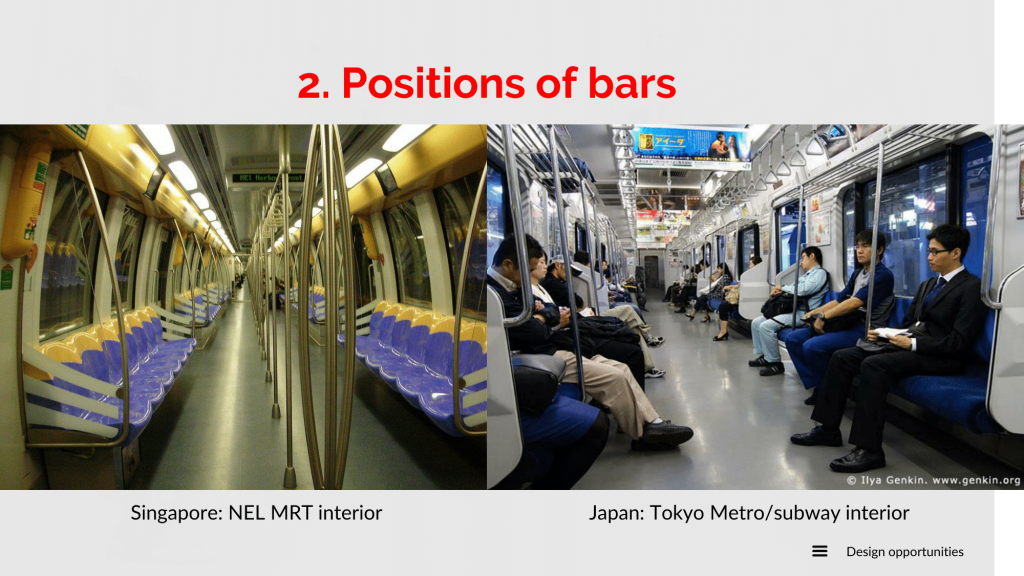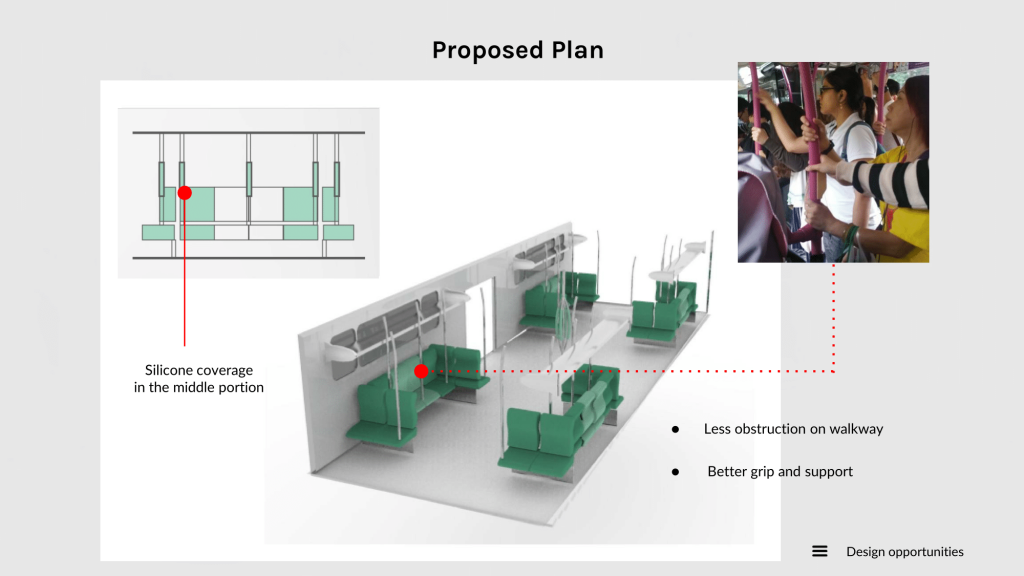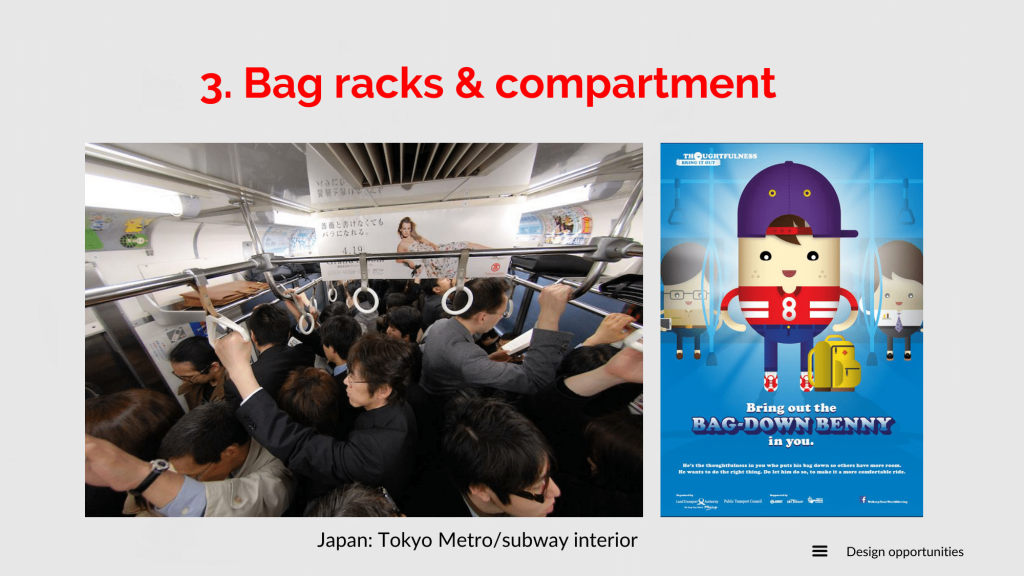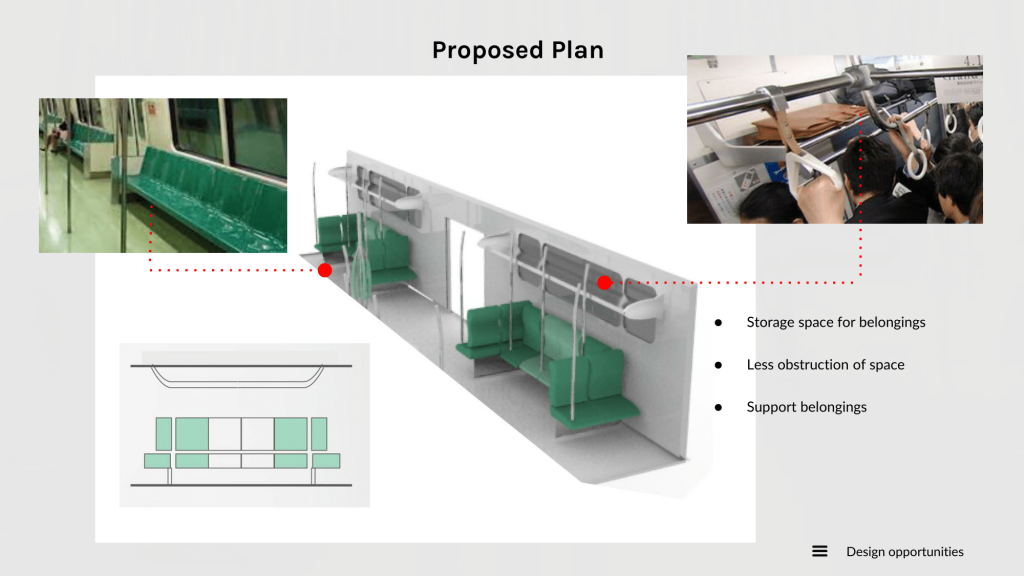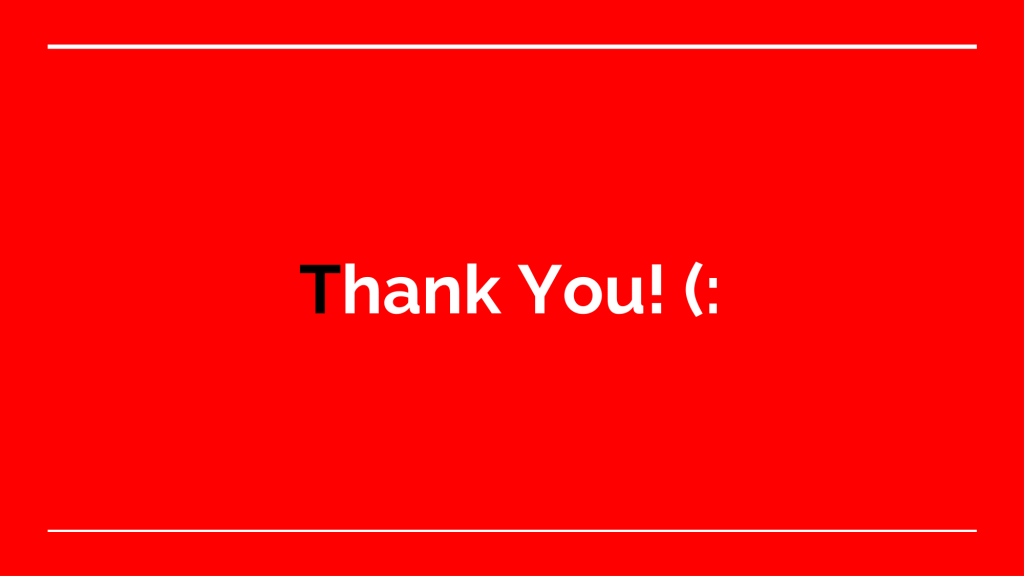with Desiree / Fiona / Jie Lin
(notes written together as well)
- People move to where is comfort and convenient: eg. In the bus, they flock to the door area which can be an obstruction. Some refuse to move further into the mrt cabin for easy alighting later
- Gantries: eg. Gantry gate is within sight, and crowd flow will naturally direct to it
People unfamiliar to the flow system in Boon Lay station would try to enter through the wrong gantries - Feedback machine at Boon Lay not visibly obvious at first glance
Good point for why we need to carefully consider how people will move within a space. The feedback machine is placed in a low traffic/low visibility area (which is it ah) — hence, we cannot expect that many commuters will see and therefore use it.
- There is an escalator which leads up to the platform, with a notice to encourage people to keep to the left side of the escalator – but not very obvious. (which had many precautionary signs)
- Also a social expectation to keep left (there is a sign for that but it is expected that the right lane is the express lane)
- Priority seating: colour coded on the East West Line. Located at seats nearest to the entrance – instinctive that they’re for people who need convenient accessibilities and there are signs and colour code to signify such. When people need seats but priority seats are taken, others are expected to give up their seats
- Queueing: Expected to not cut in front of others at tap out gantries and also waiting for the train
- Not make too much noise: generally chattering is acceptable but anything louder will be seen as a nuisance to those who wish to rest on the train. (not socially acceptable)
- Does flagging for the bus count as a social expectation? Cause theres no rule for that, it’s just a thing. LOL. and got bus drivers who scold when you don’t flag the bus. Or they just drive off without you true i had that experience if u dont flag then sometimes they dont stop
- ADM: Bus stop sign is available outside of ADM but the bus information board not present (with the prices and stops, etc.)
- Bus: There is a sign that says to give up your seats to the people who need it more / Ads are placed in the bus (top panel) — in the bus that we were in, it was about vigilance
- Transit: Very conspicuous signs stating the station name, and how to enter the station / Advertisement billboard along the way / Signs discouraging certain behaviours such as bringing durians into the station etc. / As it was drizzling, there was a yellow sign warning of slippery floor. / There is an escalator which leads up to the platform, with a notice to encourage people to keep to the left side of the escalator – but not very obvious. (which had many precautionary signs) / Warning signs from police (crime alert)
- Pioneer: many signs about rules & regulations / many ads along the way
- MRT: signage – route of MRT as indicated by lighting on the map, emergency button
- Boon Lay: Even towards the exit, the walls were filled up with posters with graphics communicating taking safety precautions and showing acts of courtesy while commuting. / On our way out of the gantry towards exit C to Jurong Point, we saw a sign that that indicates “Ramp At Entrance E” which got us confused as the direction of the arrow was pointed towards the escalator and it does not indicate the exact location of the ramp clearly. It took awhile for me to realized that the ramp is actually at the other side, and is only accessible if we exited the following gantry.
- FEATURES OF THE BUS: Two different kinds of seats (two different colours) — the yellow ones and the red ones. Not very obvious unless you know, but the yellow seats are “priority seats” which are easier to access especially for the elderly (all the seats in the front) and the red ones are not. But it’s not clear that this is so.
- FEATURES OF THE BUS: The seats at the back tend to be different to access due to an awkwardly placed bar (which, I believe, was to aid those who are going to sit at the back).
- Transit: Proximity of control station in case of need for assistance / But inconspicuous top-up stations and toilet hidden behind the information board (?) / Sheltered walkway
- Peak hours @ Jurong East , changing of trains (can alight from two sides) -> if unfamiliar to that stn (traffic flow)
- Windows behind the seats cave in -> uncomfortable , not conducive for resting
- Poles towards back of the bus – obstructive
- Design does not guide people to instinctively go further in to not obstruct.
- Redundant / ambiguous signages (Boon Lay station)
- Reserved signs – culture inculcated ? middle seats ppl have no/lesser obligations?
- “Putting bag down”
- Mrt gantries
- “Standing on left” sign not obvious enough
- MRT arrival time display – not enough, hard to see
- We plan to redesign the layout/arrangement of the seats in the interior to allow smoother flow of traffic
- Taking reference to several European/western metro designs
- allocating priority seats nearest to and facing the entrance and then the normal seats inside
- Demarcating a space at the entrance for standing while commuters who are gonna travel longer dist can move inside to the seating section, allowing smoother flow of ppl as ppl who travel short dist wld only need to stand – and those who need to sit can take the priority seats and get ina nd out of the train faster
- Priority seats demarcated in the inside section to ensure people inside would also potentially let up space for those in need in case the exterior seats are taken while still providing sufficient standing space
- For us, we have the bars in the middle which could be obstructive and not as practical during peak hours. It is observed that people tend to fill the space in btwn and stand in two rows, and faces towards the chairs/windows, seldom relying on the bars in the middle but the handles (which are not even present in the few train models like NEL’s while CL models only have ONE bar in the middle of the carriage)
- Following the design of the interior of Tokyo metro train designs, the bars are situated at the seats, which also function as partitions for the seats (similar function as the grooves of our train seats), it may be more practical as we can grip onto the bars before us, and also the handles on top – less taxing for some ppl who cant hold up.
- Possibly also help to spread ppl inwards to the carriage as there are more supporting bars available there – rather than relying on the bar nearest to the exit – a huge cause to why the entrance area is so congested as some ppl refuse to move in just so they could hang onto the support there
- Also increase spaciousness without the bars in the middle, ease of moving from one carriage to another, and possibly accommodate more people in the middle standing area
- Most Tokyo metro trains have a rack above the seats for putting bags and they are usually used by standing during peak hours (as pictured) – also effective use of space
- We have the “bag down benny” campaign to encourage people to put down their bags during the journey but little did campaigners know that this method isn’t actually v practical especially during peak hours as ppl who put down their bags are usually limited in their movement with their bags at their feet. During peak hr which traffic is fluid and u need to move fast, they often cannot react fast enough to the change in environment then obstruct and delay the flow of ppl. And there is no need to put down ur bag to save space during non peak hr so it defeats the whole purpose. A few ppl even take putting their bags down to the next level by leaving their bags all over the floor like its their home and take up lots of space albeit during non peak hr.
- (Fiona) for ppl sitting down and carrying lots of bags, they often have no space to put them. Cumbersome and awkward, and ight take the space in front of them. Compartments below the seats.
- Racks on top (for the standing) + compartments below (for the sitting)
- BUT acknowledged that there might be terrorism/bomb scare though (?) which is why the space below seats are no longer opened in later designs
